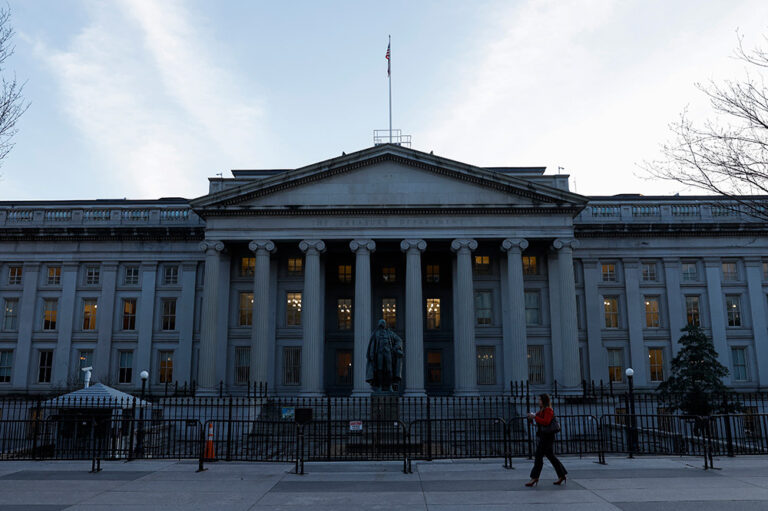There are three widely used measures of federal debt: debt held by the public, gross federal debt, and debt subject to limit. What are the important differences between those measurements?
Debt Held by the Public
Debt held by the public is the amount the U.S. Treasury borrowed from outside lenders via financial markets to support government activities. That debt is held by individuals, businesses, pension and mutual funds, state and local governments, and foreign entities. It does not include intragovernmental debt, which is used to track the cash flows of trust funds and other government accounts.
Many economists regard debt held by the public as the most meaningful measure of debt because it focuses on cash raised in financial markets to support government activities. It is often expressed as a percentage of gross domestic product (GDP), a ratio that measures the economy’s capacity to support such borrowing. Debt as a percentage of GDP is particularly useful in comparing debt levels over time and among countries of different sizes.
The debt-to-GDP ratio for the United States at the close of fiscal year 2024 was 98 percent. While this figure is down slightly from 99 percent in 2020, which was a 74-year high, the nation’s fiscal outlook is still on an unsustainable path. Debt held by the public is on track to exceed GDP in 2026 and climb to 118 percent in 2035.
In dollar terms, debt held by the public at the end of fiscal year 2024 was $28.2 trillion. Such debt is issued in a range of maturities, from 1-month bills to 30-year bonds. It also includes securities not traded in secondary markets, such as savings bonds and state and local government securities.
At the end of December 2024, domestic creditors held 76 percent of the outstanding debt held by the public. Foreign creditors held the remaining 24 percent.
The Federal Reserve typically accounts for a significant proportion of debt held by the public owned by domestic investors. As of June 2024, for example, the Fed owned 34 percent of domestically held public debt. However, in response to inflation over the past few years, the Federal Reserve has been decreasing the amount of Treasury securities that they hold; therefore, the proportion of debt they own may drop.
Gross Federal Debt
Gross federal debt equals debt held by the public (explained above) plus debt held by federal trust funds and other government accounts. In fundamental terms, it can be thought of as debt that the government owes to others, plus debt that it owes to itself.
Gross federal debt stood at $35.2 trillion at the end of fiscal year 2024 — $7.0 trillion of which represented securities held by government accounts. Of that total, $2.6 trillion was held by Social Security’s Old-Age and Survivors Insurance trust fund. Securities held by such accounts represent internal transactions of the government and thus have no direct effect on credit markets.
Debt Subject to Limit
The debt ceiling, also known as the debt limit, is the maximum amount of money that the U.S. Treasury can borrow. Increasing the debt ceiling allows the Treasury to borrow funds to pay for government obligations that have already been incurred due to laws and budgets approved by the President and Congress.
Debt subject to limit is almost an identical measure to gross federal debt. The main difference between the two measures is that debt subject to limit excludes debt issued by agencies other than the Treasury and the Federal Financing Bank. The debt ceiling was suspended from June 2023 to January 1, 2025 and now stands at $36.1 trillion.
Conclusion
Each measure of debt is useful in understanding our nation’s fiscal condition. However, no matter the measurement, our debt is heading toward historic highs. Policymakers must address the country’s unsustainable national debt.
Photo by Derek White/Getty Images for the Peter G. Peterson Foundation
Further Reading
What Types of Securities Does the Treasury Issue?
Let’s take a closer look at a few key characteristics of Treasury borrowing that can affect its budgetary cost.
Quarterly Treasury Refunding Statement: Borrowing Up Year Over Year
Key highlights from the most recent Quarterly Refunding include an increase in anticipated borrowing of $158 billion compared to the same period in the previous year.
Experts Identify Lessons from History for America Today
A distinguished group of experts to evaluate America’s current fiscal landscape with an historical perspective.


